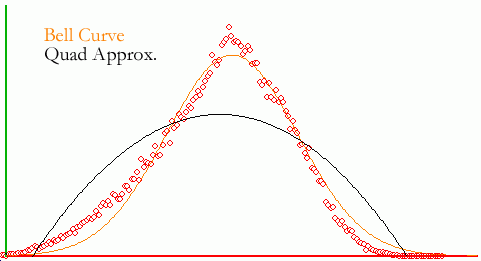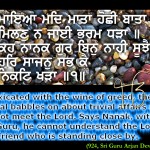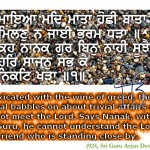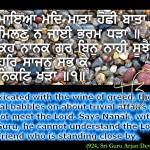I like to use the database to its full potential. For example, suppose someone has a list of vouchers and needs to find the vouchers that were paid later than the due date. One way to do this might be to read the vouchers one by one from the database, compare the due date with the payment date and determine the results. The other, recommended method will be to add the required criteria to the query itself so that only the exact result is obtained. With the second method, only 5% or 10% of the vouchers will need to be transferred from the database to the application while in the first method, all vouchers will need to be transferred.
In other words, the exact business requirements should determine the query. While you are at it, you should also keep in mind the indexes. Queries should always be written to minimise Disk I/O and transfers between the DB and the Application (server).
The database itself is quite powerful (esp Oracle) and I feel that its potential is always under-utilised. Let me show through an example.
I once had a requirement that there is a table having first, middle and last names of employees and the email ID. Something like this, ignoring the datatypes – assume all are VARCHAR2:
create table userlist(fname,mname,lname,emailid);
Each employee has middle name blank. Its possible that multiple employees have identical fname, lname with each other. For example, there can be two people having name ‘Hardeep Singh’. In this case, if the emailid of the two employees is same that means they are the same person having multiple rows, else they are different persons having the same name.
For example:
- Hardeep Singh alpha@gmail.com
- Hardeep Singh beta@gmail.com
- Hardeep Singh beta@gmail.com
- Satinder Singh gamma@gmail.com
- Satinder Singh gamma@gmail.com
- Gorakh Nath gn@gmail.com
In this case, 2 & 3 are the same person and 4 & 5 are also the same person. 1 & 2 are two different people.
Now the requirement is that we have to modify the middle name by adding a number such that every different person has a unique name. In the example above, the names should be:
- Hardeep Singh '1' alpha@gmail.com
- Hardeep Singh ‘ ′ beta@gmail.com
- Hardeep Singh ‘ ′ beta@gmail.com
- Satinder Singh ‘ ′ gamma@gmail.com
- Satinder Singh ‘ ′ gamma@gmail.com
- Gorakh Nath ‘ ′ gn@gmail.com
Now we know that ‘1’ is different from ‘2’ and ‘3’ because he has a different middle name.
The middle name to be added is given at the end of the name, in quotes. Gorakh Nath does not get any middle name since his name is unique. Any Tom, Dick or Harry would do this requirement in the following way: Read all the details one by one, look for people having the same name, then check the emailID then issue an UPDATE like this:
UPDATE userlist SET mname='1' where emailID='alpha@gmail.com';
Such UPDATES would need to be issued one for each person. However, this can be done through just a single UPDATE statement, without reading the list of employees at all. Here is the query:
update userlist a
set mname=(select x from (select rownum x,emailid,fname,
lname
from userlist xa
where exists
(select 1
from userlist xb
where xa.lname=xb.lname and
xa.mname=xb.mname and
xa.fname=xb.fname and
xa.emailid<>xb.emailid))
ord
where ord.emailid=a.emailid and
ord.fname=a.fname and
ord.lname=a.lname)
where exists(select 1
from userlist b
where a.lname=b.lname and
a.mname=b.mname and
a.fname=b.fname and
a.emailid<>b.emailid);
I guess an explanation is owed as to how it works. To my knowledge this query would work only in Oracle – but there would be ways to make it work in other Databases as well.
‘rownum’ returns the number of that particular row in the result set. The ‘exists’ clause at the end makes sure only people with same names are processed (‘gn@gmail.com’ is ignored). The part:
(select x from (select rownum x,emailid,fname,lname
from userlist xa
where exists
(select 1
from userlist xb
where xa.lname=xb.lname and
xa.mname=xb.mname and
xa.fname=xb.fname and
xa.emailid<>xb.emailid))
ord
creates a temporary view having the number, the email ID and the firstname. In the given scenario the result from this will be something like:
- 1, alpha@gmail.com, Hardeep, Singh
- This row will be absent because of the xa.emailid<>xb.emailid clause
- This row will be absent because of the xa.emailid<>xb.emailid clause
- This row will be absent because of the xa.emailid<>xb.emailid clause
- This row will be absent because of the xa.emailid<>xb.emailid clause
- This row wont even be considered, as I explained above
Had there been yet another ‘Hardeep Singh’ with a different email ID, he would have got a middle name of ‘2’.
Now the last step is to copy over the numbers based on the first and last names only – that part is pretty simple. Please post any questions in the comments area.
Solution using PGSQL:
update userlist a
set mname=(select rn from (
select row_number() over(order by(select null)) rn,emailid from(
select distinct p.emailid from userlist p) x) y
where y.emailid=a.emailid)
where exists(select 1
from userlist b
where a.fname=b.fname and
a.mname=b.mname and
a.lname=b.lname and
a.emailid<>b.emailid)
























